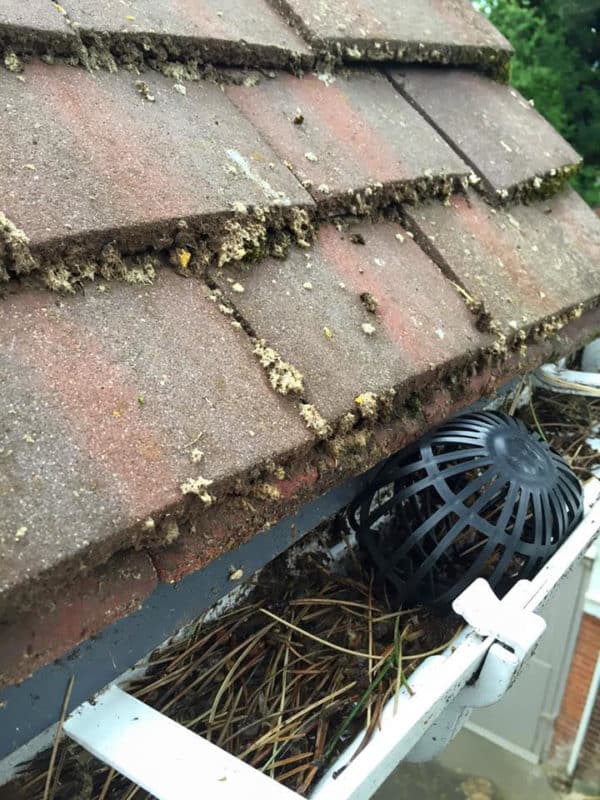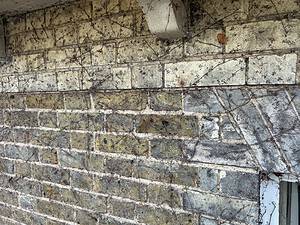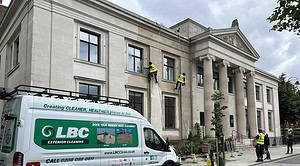Why You should get your Gutters checked at least once per year
Your gutters play an important role in the protection of your property. The job of the guttering system is to effectively remove the rain water that comes off the roof, catching and containing the rain water that runs off the roof tiles and then transporting this water through the guttering system and into a rain water drain or soakaway at ground level
With the British climate and seasonality, the conditions are ideal for ‘gutter blocking objects’ to make it into your guttering throughout the year
Here’s just a few to watch out for;
- Bird Nests
- Leaves from surrounding trees
- Moss from the roof
- Plants growing
What Happens if My Gutters are not Working as they should?
If you had a problem with your roof and some tiles were missing, you would quickly get these tiles replaced as the water would be coming into your property and potentially causing expensive damage.
It’s just as important to fix any problems with your gutters. If water is not effectively being removed from your property and guttering is blocked or overflowing due to problems with the levels, then water will be running down your walls and eventually this can cause not only unsightly staining on your properties exterior but more seriously, expensive damp problems.
If water is consistently running down the surface of a wall, the wall can start to become damp and this dampness can travel through the bricks and membrane and start to cause internal damp issues such as ‘blown’ plasterwork ‘bubbling paint’ and even ‘swollen’ window frames or skirting boards.
This is where the problem becomes an expensive fix. If you have internal dampness you need to identify the cause of the problem and fix it at the source.
You would then need to strip plaster off, dehumidify the room until dry enough to re-board, replaster and repaint and reinstall any damaged woodwork
Yours looking at potentially needing to use 3+ different trades for these different stages and this is why damp can be such an expensive issue to resolve
But there is good news…
The most common cause of damp problems with properties in the UK is blocked or leaking gutters. Something that can in-expensively and quite simply be prevented or fixed easily.
What can you do to prevent expensive damp problems
Have your gutters checked at least once per year – Make sure they are water tested to identify and leaks or levelling issues. Make sure they are visually inspected for any debris that can cause blockages. The two most common items that lead to blocked guttering are Leaves and Moss
Get Your roof professionally cleaned if its covered in moss – We offer a biocidal treatment after every roof clean to help deter the growth of moss for longer!
What to watch out for
Next time it rains take an umbrella and venture out to take a look at your gutters
Watch out for any water dripping from any section of the guttering, the joints between lengths of guttering are the most commonplace for leaks. Normally this is caused by ‘perished rubbers’ that shrink in size over the years and no longer do their job of creating a water seal between lengths of guttering. ( Don’t worry these can usually be changed)
Also, look out for water overflowing from any section of the guttering. Check the bottom of the downpipes (the vertical pieces of guttering) and make sure that water is coming out of these.
When it stops raining and starts to dry up, take a walk around your property and look for any damp areas on the ground or on the walls, these areas will remain wet long after all the other surfaces have dried up and can often be green in colour as damp areas are an ideal area for organic growth to take place.
The most common problems with guttering
- Blocked downpipes from moss or leaves
- Failing rubbers in jointing brackets
- Stagnant water due to incorrect levels in guttering
- Missing end caps
What to do if you know you have a problem with your gutters or would like to have them checked
Call: 0330 111 8080
The most common problem we find with gutters is blocked downpipes. One option that can help with this is installing downpipe protectors as seen below:















